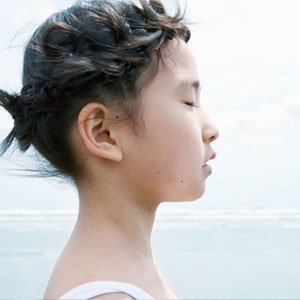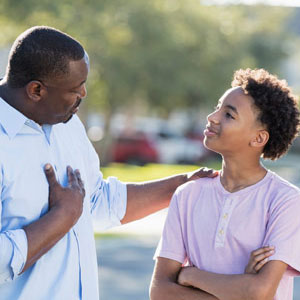Polio Vaccines (IPV, OPV) for Kids
What Are Polio Vaccines?
Polio vaccines protect against polio, an infection caused by a virus that can lead to permanent paralysis (being unable to move) and sometimes death.
Polio used to be common, but thanks to polio vaccines, the infection has largely disappeared from the United States. Although, if fewer people get vaccinated against polio, there’s a greater chance of an outbreak (when more people get sick with a disease than expected in one area). Polio still happens in other countries and can be spread by people who travel, so the vaccines are important.
What Are the Types of Polio Vaccines and How Do They Work?
There are two types of polio vaccines: inactivated poliovirus vaccine (IPV) and oral poliovirus vaccine (OPV).
IPV
IPV is given as a series of shots. It’s the polio vaccine that kids get in the United States, Canada, Europe, and many other countries where the risk of getting infected with poliovirus is low.
IPV contains a killed, or inactivated, poliovirus. (IPV can’t cause polio.) After someone is given IPV, the body’s immune system makes proteins called antibodies, which can spot the virus. These antibodies last a long time in the body. This means that if the person is later exposed to polio, the antibodies are in place and the body knows how to fight polio so the person doesn’t get sick. This is called immunity.
OPV
OPV is given by mouth as a liquid. Unlike IPV, OPV contains a weakened live vaccine. OPV is no longer used in the United States and many other countries. That’s because there’s a rare risk of it causing polio in people who aren’t immunized or who have weakened immune systems.
OPV is still used in a few countries where the risk of getting infected with poliovirus is high because the vaccine is low-cost and easy to give to a lot of people. OPV can create immunity in someone who’s vaccinated and sometimes can also spread (through a vaccinated person’s saliva or poop) to provide immunity to others nearby. Rarely, the live virus in OPV can lead to paralysis in those it spreads to when not enough people in the community are vaccinated.
Why Does My Child Need a Polio Vaccine?
IPV helps protect against polio infection, which is very contagious (easy to catch from someone else). Doctors have given IPV to millions of people for decades, and it’s a safe and proven way to help your child’s body fight off polio. In fact, IPV is part of the childhood vaccine schedule.
When you get your child vaccinated with IPV, you’re helping prevent the spread of polio, so you’re also protecting other people. This includes babies who are too young to get the vaccine, people who are severely allergic to it, and people with some serious illnesses.
-

How Vaccines Help
Vaccines keep millions of people healthy each year by preparing the body to fight illness. Learn how vaccines help and get answers to your biggest questions about vaccines.
When Should My Child Get a Polio Vaccination?
Children usually get a total of four doses of IPV based on the polio vaccine schedule. Each dose is given at ages:
- 2 months
- 4 months
- 6–18 months
- 4–6 years
Sometimes IPV is given in a combination vaccine (in the same shot) with other vaccines. In this case, a child might get a fifth dose of IPV. This is safe.
Kids who will travel to a country with a high risk for infection can get the 4 shots in a shorter timeframe, with the first dose as early as 6 weeks of age. They still should get the final dose at age 4 or older (at least 6 months after the previous dose).
OPV is no longer given in the United States, but if your child has had it, doses given before April 2016 can count toward a child’s U.S. polio vaccination requirements. Doses given after that won’t count.
Are There Possible Polio Vaccine Side Effects?
IPV can cause mild side effects that go away after a couple of days, like a fever and pain, redness, or swelling in the area where the shot was given. Babies and toddlers might also get fussy or tired. As with any vaccine, there’s a small risk of fainting and a very small chance of an allergic reaction.
While OPV is not given in the United States, side effects from it seen in other countries can include headache, belly pain, fever, and diarrhea.
Caring for Your Child After the Polio Vaccine
For pain or fever, check with your doctor to see if you can give either acetaminophen or ibuprofen, and to find out the right dose. Do not give ibuprofen to babies under 6 months unless your doctor says it's OK.
A cool, damp cloth or a heating pad on the site of the shot may help reduce soreness, as can moving or using the arm or leg. Give kids plenty to drink, and dress them in light clothing that isn’t tight. Sometimes a sponge bath with warm water may help kids feel better.
When Should I Call the Doctor?
Call your doctor if your child has any symptoms of an allergic reaction (like trouble breathing, swelling of the face, or hives) or doesn’t feel well after getting the vaccine.
When to Delay or Avoid Polio Vaccines
Kids can get a polio vaccine if they have a simple cold or other minor illness, but your doctor might choose to delay the vaccine if your child has a more serious illness.
Talk to your doctor if your child ever had a serious allergic reaction, or any allergic reaction to:
- an earlier IPV shot
- the antibiotics neomycin, streptomycin, or polymyxin B
Having had a reaction to any of these may prevent your child from getting the vaccine.


